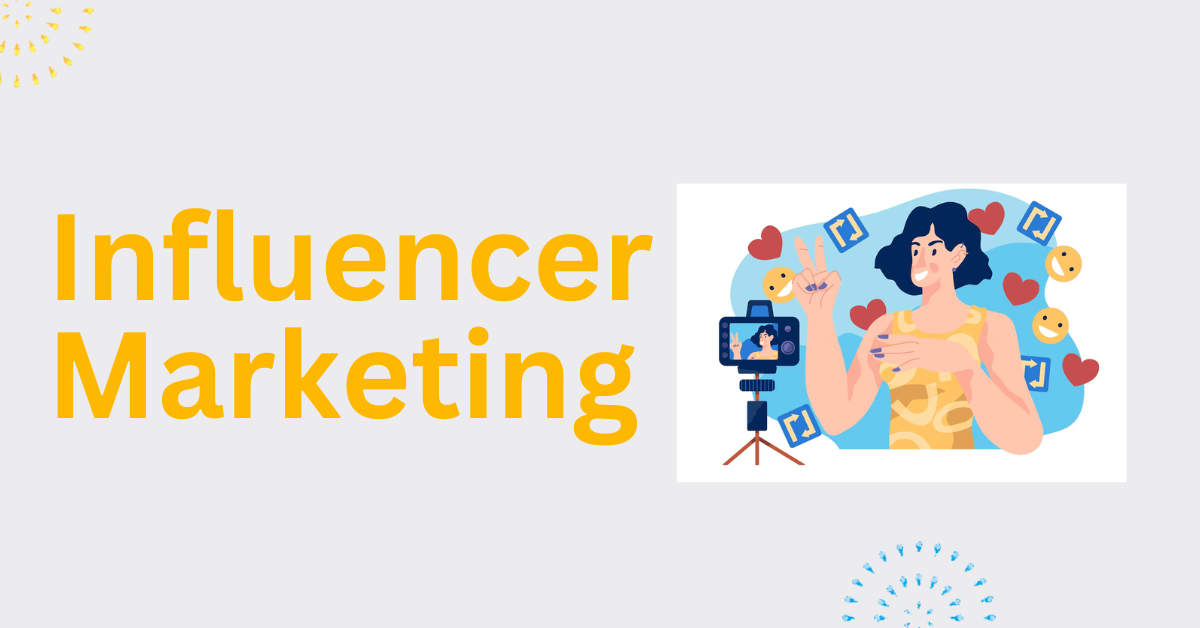Influencer marketing has been an integral part of the digital marketing world over the last decade. Now, from a niche strategy initially involving bloggers and YouTubers, it’s evolved to become a global multi-billion-dollar industry and continues to build power as we move into 2024, where more and more brands are leveraging influencers to connect with audiences, enhance engagement, and increase sales.
In this blog, we’re gonna dive into what’s changed about influencer marketing, why it is still such an effective marketing channel in 2024, and what can businesses do to capture its effectiveness.
1. The Evolution of Influencer Marketing
Influencer marketing has come a long, long way from its infancy, where it used the voices of celebrities to support brands. Now, with the growth and influence of social media platforms, in particular Instagram, YouTube, and TikTok, came a new force in influencer marketing: content creators backed by deeply engaged niche audiences.
It will further be divided into three stages of the evolution of influencer marketing as follows:
– Celebrity Endorsements (Early 2000s): In traditional advertising, celebrities were used for endorsements. The costs were quite expensive and were usually employed by big brands only.
– Influencer Marketing Grows Up (2020s): As TikTok rises to prominence and Instagram and YouTube come of age, influencer marketing will become increasingly data-driven. Brands will not so much care about paying for endorsements but about ROI and engagement metrics.
– Influencer marketing today, as of 2024, has evolved into a more sophisticated and reliable marketing strategy for companies in all sectors. Where influencers truly thrive is in the area of authenticity, combined with trust building toward and with their followers, thus affecting impact relative to traditional advertising.
2. Why Influencer Marketing is Still Effective in 2024
Many are relevant even in 2024, which constitute the success factors of influencer marketing:
1. Authenticity and Trust
The modern consumer is much more skeptical towards brand communications as compared to earlier times. Authenticity usually strikes the psyche and judgment of younger consumers, who mark authenticity above everything else. Influencers, in particular, micro and nano-influencers, cultivate relationships with their audience; thus, a recommendation is believed to be authentic since it looks like a congruent expression with their personal brand, content style, and interest of the audience.
This is why, in 2024, the correct brand collaborations with such influencers will be able to tap into that trust, resulting in conversion rates higher than those generated by traditional advertisements.
2. Targeted and Niche Audiences
Influencers tend to cater to specific niches or communities. Whether beauty, fitness, technology, or sustainable living, influencers focus on topics that resonate with their audience. This allows brands to target immensely specific segments rather than casting a wide net with traditional media.
With the advanced data analytics tool, in 2024, brands can identify the influencer whose audience has a perfect match with the ideal customer profile, which generally makes influencer marketing very cost-effective.
3. Higher Engagement and Organic Reach
Influencers have a strong bond with their followers; that’s a much bigger engagement rate compared to the engagement rates on the brand pages. Again, the posts seem to be more personal recommendations rather than sales pitches, so it is easier to generate conversations, shares, and reactions.
Once again, 2024 features content pushed by social media giants Instagram and TikTok, which shows that the most engaged influencers have reached your feeds. Influencers still reach more people organically than any brand, and algorithms on the most popular forms of social media have limited content available for them.
4. Multi-Platform Influence
In 2024, in-bound influence is no longer held exclusively to one platform only. Cross-platform influence is the new way forward, where influencers have built their presences on multiple channels, such as TikTok, Instagram, YouTube, and perhaps even Twitter or LinkedIn. This will be a much more broadened reach with greater outcomes, thus allowing brands to connect with customers at touchpoint.
For instance, a content creator could post an in-depth review on YouTube, a teaser on Instagram, and content from the set of your behind-the-scenes footage on TikTok. This multi-platform extension maximizes the campaign’s overall reach and impact.
5. Creator Economy and Brand Partnerships
2024 is the year of creator economy wherein not only will influencers send product messages but also work with brands to create co-products and coexperiences to be realized. It increases a new level of partnership with an influencer from being a mere promoter or partner to an active collaborator alongside brands who can help deliver a product that really matters to them.
Some examples of such brands are Nike, Glossier, and Revolve, who have already experienced this model by cooperating with an influencer for the launch of exclusive, and a few limited-edition products. This contributes not only to sales but also to long-term brand loyalty.
3. Types of Influencers to Leverage in 2024
Another reason why influencer marketing works is because of the very diverse number of types of influencers brands can use to produce results. What are they, then?
– Nano Influencers (1,000 – 10,000 followers
Nano influencers have smaller but very engaged audiences. Their endorsements appear almost personal since they seem to be more accessible and authentic. Nano influencers are great for local businesses or niche brands looking at highly targeted engagement.
– Micro Influencers (10,000 – 100,000 followers)
Micro influencers are very influential in their niches and have a highly loyal fan base. They can give a range of reach and engagement balance, which makes them superb for brands that are interested in creating meaningful relationships with their communities. The probability of having good rates of engagement in the content is more probable with micro influencers. Also, the cost to work with micro influencers is lower than the cost of macro influencers.
– Macro Influencers (100,000 – 1 million followers)
Macro influencers have high reach and easily influence larger brand awareness. Though they may not interact with the users as much as that of micro and nano influencers, they are great for new product launches or campaigns that need mass visibility.
– Mega Influencers (1 million+ followers)
Mega-influencers are celebrities. They have the most reach but tend to have less personal interaction with their audience. Mega-influencers are most useful for global brands trying to achieve massive exposure.
4. Best Practices for Influencer Marketing in 2024
To succeed in influencer marketing in 2024, brands will want to pay attention to these key best practices:
1. Authenticity above All
Consumers can quickly spot fake campaigns by 2024. Do not promote overly commercial content, let it be the influencer who maintains control of his creative output because their style and voice will better resonate with their followers. Authenticity should guide every collaboration.
2. Choose the Right Influencers
Counting followers when you choose influencers is a very costly error. Choose an influencer for the quality of the influencer, including the engagement rate, quality of content, and relevance of his audience. Tools such as HypeAuditor, Upfluence, and Heepsy will make it easier for brands to find those influencers who are close to your target demographics.
3. Long-Term Partnerships:
The short-term collaborations may not be as good. For 2024, long term collaborations work well since they create a deeper connection between the influencer and the brand, therefore helping with loyalty to the brand and a better, more durable engagement.
4. Cross-Over with Other Campaigns via Influencers
Influencer marketing will work best when a broader marketing strategy is used. Always pair influencer campaigns with other digital strategies, such as paid social media ads, content marketing, and SEO, to amplify the effects. For example, repurpose the influencer-generated content on your own brand’s social media pages and website.




